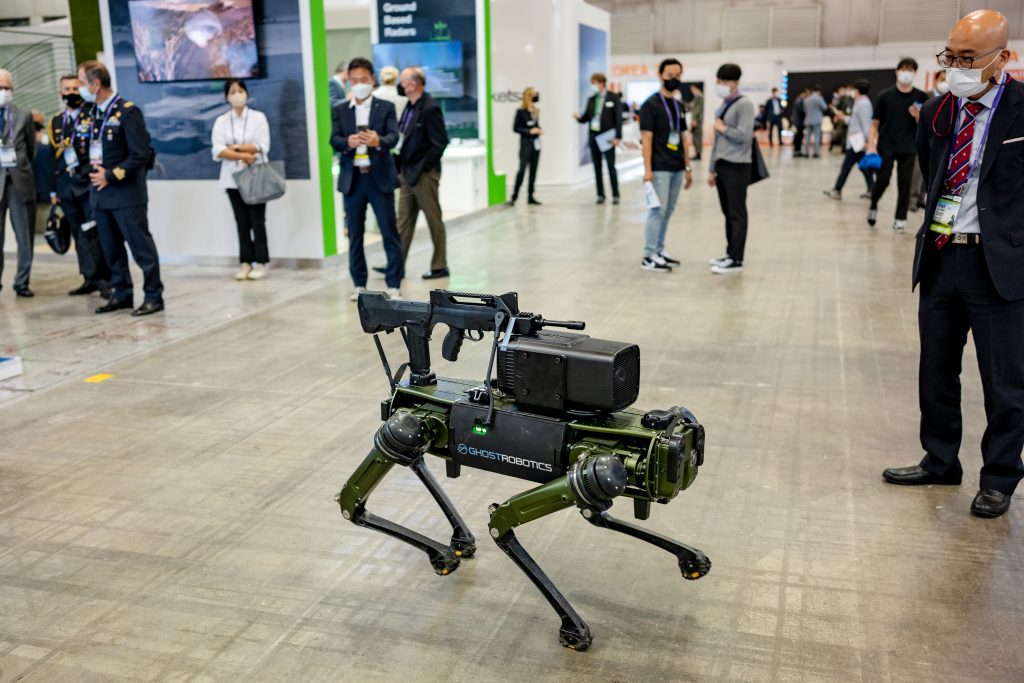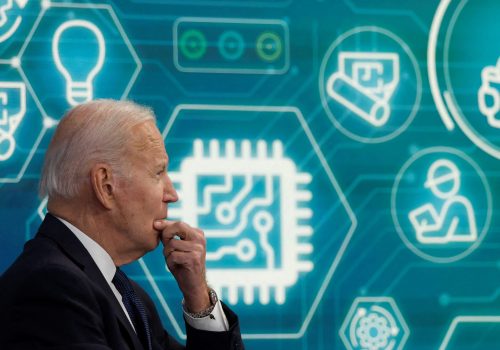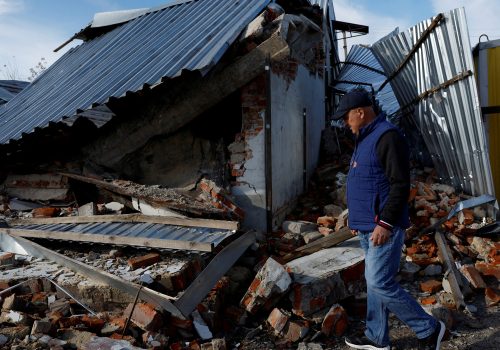The NATO Innovation Fund (NIF), launched at the Madrid Summit in June, offers a historic opportunity for the Alliance to boost its defense capabilities through investments in dual-use emerging and disruptive technologies (EDTs). While the fund’s ultimate goal is to help deliver on NATO’s mission to defend freedom and the international rules-based order, an even greater opportunity resides in extending collaboration with democracies in the Asia-Pacific including Taiwan, South Korea, and Japan: Those democracies, by establishing NIF-aligned investment funds, would strengthen their linkages to the NATO defense-technology ecosystem—and would offer another soft-diplomacy tool in a world of geostrategic competition.
Allies are doing what they must to deter against the full spectrum of threats worldwide. For example, since Russia’s invasion of Ukraine, NATO has activated its rapid reaction force and strengthened the Enhanced Forward Presence groups in Central and Eastern Europe. But NATO’s most future-looking initiative is the NIF, a one-billion-euro fund that will invest in start-ups and venture capital funds developing dual-use emerging technologies. Twenty-two (out of thirty) allies launched the NIF, which is the world’s first multi-sovereign venture capital fund.
NATO has a responsibility to protect close to a billion citizens, and its ability to deliver on this mission relies on military supremacy over adversaries. Military supremacy, however complex in its definition, depends on technological superiority. Historically, the West, led by the United States, has been able to garner a military edge through massive and timely investments in early-stage innovations. Whether it is the Apollo program or the invention of the internet and the Global Positioning System, public investments have been essential in developing the United States’ (and NATO’s) dominant military capabilities.
The US defense industry continues to invest unilaterally in over-the-horizon technologies. For example, Moderna’s mRNA research was seeded years ago by the Defense Advanced Research Projects Agency (DARPA), the US Department of Defense’s research arm, which was instrumental in building the innovation base for the US tech sector. Yet, to an unassuming eye, the latest exponential technology advances globally seem to arrive only from private technology companies. These companies pour vast capital into research and development, focusing on the highest-revenue opportunities that are likely to generate the most profitable outcome: opportunities typically unrelated to defense, such as the newest social networking app, a faster food-delivery service, or an online platform for second-hand clothes.
The NIF, on the other hand, will identify often-underlooked dual-use investment opportunities across the Alliance in EDTs such as artificial intelligence, autonomy, space, hypersonics, and more, with an aim to scale start-ups and, eventually, incorporate them into NATO’s defense capabilities. Inspired by the United States’ In-Q-Tel, the NIF is timely, and its aim is axiomatic. Yet two elements will be key to its success: an expansion of the depth and breadth of the innovation ecosystem and the creation of out-of-area partnerships.
First, in the short and medium term, the NIF should foster a dynamic transatlantic ecosystem flooded with accelerators, co-investors, later-stage investment funds, research facilities, and innovators in dual-use technology. NATO’s newly formed Defence Innovation Accelerator for the North Atlantic is one such example, but more is needed. While the NIF aims to invest in early-stage companies, the emergence of other similarly themed investment funds will be key. For example, as startups grow and scale, the need for growth-stage investment funds focused on dual-use defense technologies will rise.
Second, while NATO is leading in the creation of a multinational defense-tech ecosystem across the Atlantic, there is an imperative to mobilize other democratic countries that align with NATO values. Geopolitical uncertainty in Asia, marked by China’s increasing attempts to reshape the international order, shows the urgency for Taiwan, South Korea, Japan, Australia, and others in bolstering the region’s technological preparedness to deter and defend. Multilateral-defense efforts such as AUKUS and the Quad are important initiatives, but collaborating on and investing in emerging and disruptive technologies on a wider scale is vital.
Hence, there is an opportunity for NATO’s Asia-Pacific partners to rally public (and private) capital to invest in defense-tech companies across their local innovation ecosystems. Together or individually, Asian democracies should consider setting up NIF-aligned venture capital funds that would allocate investments in dual-use EDTs and collaborate with the Alliance on research and development in all technology readiness levels.
In a fragmenting world, the future is likely to be defined by the battle between democracies and authoritarian regimes. As the competition with China intensifies, the NIF should serve as a beacon of inspiration for democracies in the Asia-Pacific to mobilize capital, bolster collaboration, and invest with the aim to defend freedom and preserve peace.
Giedrimas Jeglinskas is a nonresident senior fellow at Atlantic Council, a former NATO assistant secretary general, and a former deputy defense minister of Lithuania.
Further reading
Tue, Nov 15, 2022
Designing domestic and multilateral strategies for maintaining technological superiority
Strategic Insights Memo By Peter Engelke, Emily Weinstein
This fall, the Scowcroft Center for Strategy and Security and the Global China Hub convened experts and officials in a private workshop to discuss how the United States, in conjunction with allies and partners, might design strategies to maintain technological superiority over China. The workshop explored the necessary components of a competitive strategy via both “protect” and “run faster” policies. This memo draws from insights gathered during the workshop to give policy makers a better understanding of the potential tools in the strategic arsenal.
Thu, Oct 27, 2022
The ambition is there to rebuild Ukraine. Here’s how to make it work.
New Atlanticist By
Leaders will need to keep an eye on the size and structure of aid, transparency and accountability in reconstruction, and more to help Ukraine rebuild.
Tue, Oct 11, 2022
Taiwan shows how winning the semiconductor race takes more than money
New Atlanticist By
To match East Asian leaders in chip manufacturing, the US will have to improve its education system and learn from processes down to the factory floor.
Image: The Ghost Robotics Vision 60 exhibited during the Defense Expo Korea 2022, the biggest military weapon exhibition in the country, held at KINTEX (Korea International Exhibition and Convention Center) on September 21, 2022 in Goyang city, Gyeonggi, South Korea. The exhibition has been held every two years since 2014. This year, 350 companies are participating in the expo, an increase from 210 in 2020. This year, major military officers including defense ministers from 43 countries including Saudi Arabia, the United Arab Emirates, Slovakia and Romania are visiting. (Photo by Chris Jung/NurPhoto)NO USE FRANCE


